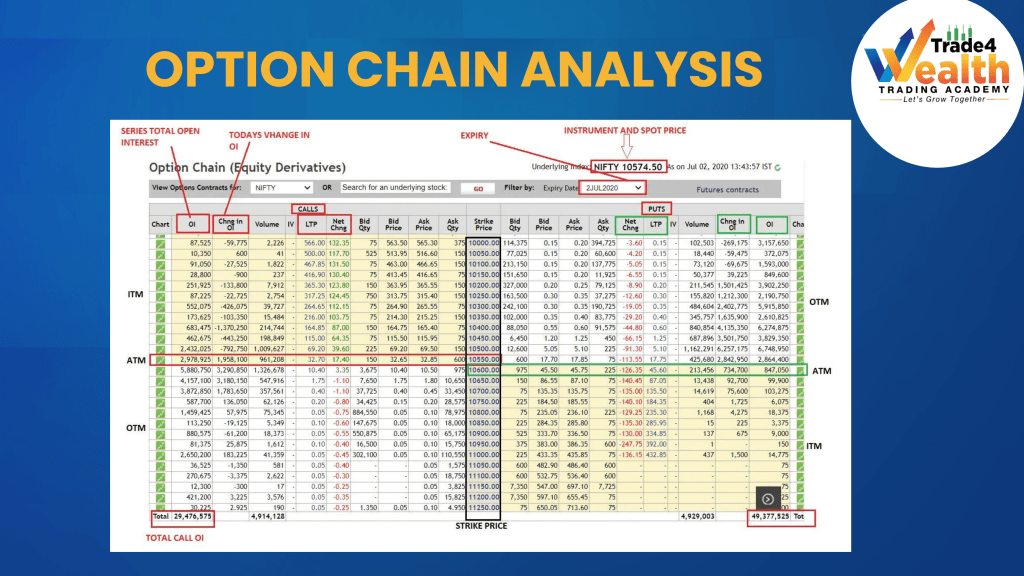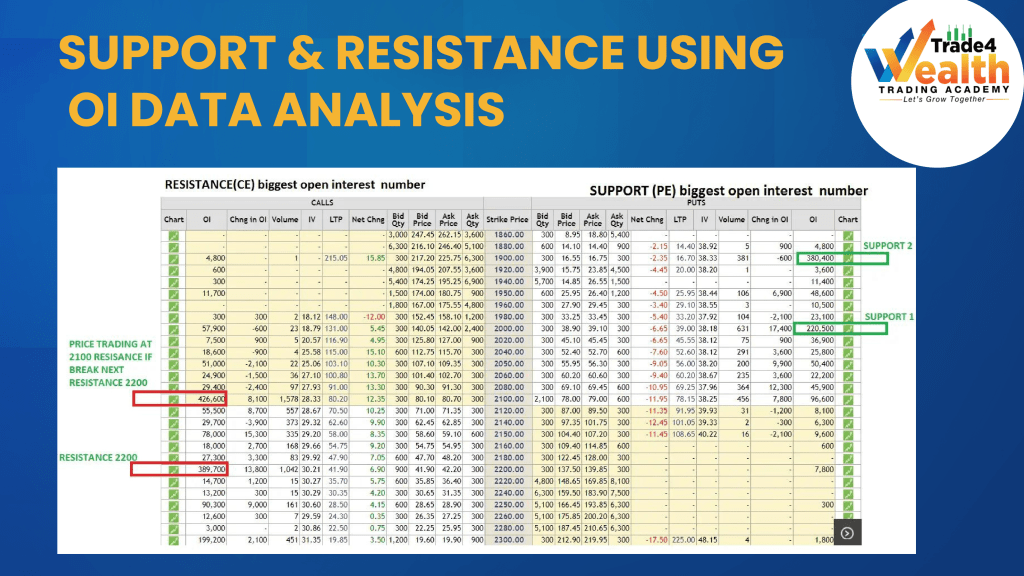Table of Contents
Introduction:
Bank Nifty option trading is most popular trading segment in India. This approach allows traders to leverage the movements of the Bank Nifty index, which comprises the most liquid and actively traded banking stocks in India. However, to effectively engage in Bank Nifty option trading, it is crucial to utilize a powerful tool called option chain analysis. In this blog, we will explore the technical aspects of Bank Nifty option trading and details of option chain analysis, for taking best trading decisions.
Understanding Bank Nifty Options:
Before diving into option chain analysis, it is essential to comprehend the basics of Bank Nifty options. Options are derivative instruments that provide traders with the right, but not the obligation, to buy (call option) or sell (put option) the Bank Nifty index at a predetermined price (strike price) within a specified time frame (expiry date).
The Significance of Option Chain Analysis:
Option chain analysis is a technique that involves studying the option chain, which is a comprehensive table displaying the available options contracts for a particular underlying asset, in this case, the Bank Nifty index. It provides valuable insights into market sentiment, potential price levels, and overall market expectations. By analyzing the option chain, traders can predict the demand and supply dynamics, identify support and resistance levels from OI(Open Interest), and assess the probability of price movements.
Components of an Option Chain:
An option chain consists of various components, each of which plays a crucial role in the analysis:
a. Strike Prices: The option chain lists a range of strike prices for both call and put options. These prices determine the level at which traders can buy or sell the Bank Nifty index.
b. Open Interest: Open interest represents the total number of outstanding contracts in the market. High open interest indicates active participation and suggests the presence of strong market sentiment.
c. Volume: Volume reflects the number of contracts traded during a given period. Analyzing volume trends helps identify the intensity of trading activity and potential price movements.
d. Implied Volatility: Implied volatility is a measure of the market’s expectation of future price volatility. High implied volatility indicates higher option premiums, signifying greater uncertainty in the market.

Interpreting Option Chain Analysis:
To effectively interpret option chain analysis, traders should focus on the following aspects:
a. Option Chain Structure: Analyzing the distribution of call and put options across different strike prices can provide insights into market expectations. A concentration of call options at a particular strike price indicates a bullish sentiment, while a higher concentration of put options suggests a bearish sentiment.
b. Support and Resistance Levels: Identifying areas of high open interest and volume can help determine significant support and resistance levels. These levels often act as price barriers and influence the market’s behavior.

c. Changes in Open Interest: Monitoring changes in open interest can reveal shifts in market sentiment. Rising open interest coupled with increasing volume indicates growing trader participation and suggests a potential price breakout or reversal.
d. Implied Volatility Analysis: Comparing implied volatility levels with historical volatility can provide insights into overbought or oversold conditions. Elevated implied volatility may present trading opportunities, especially during periods of market uncertainty.
e. Incorporating option chain analysis into your Bank nifty trading strategy can be a game-changer. By leveraging the insights provided by option chain data, traders gain a competitive edge in both intraday and positional trading. This analytical approach allows for better decision-making, improved risk management, and increased profit potential.
Conclusion:
Bank Nifty option trading using option chain analysis offers traders a comprehensive view of the market sentiment, allowing them to make informed trading decisions. By examining the option chain’s components and interpreting the data, traders can identify potential price levels, support and resistance zones, and shifts in market sentiment.
Disclamier:
The information provided in this blog post is for educational and informational purposes only. It should not be construed as financial advice or a recommendation to buy or sell any securities. Always do your own research and consult with a qualified financial advisor before making investment decisions












Excellent analysis. This will definitely help us in improving our profitability.
Thank You
The way you have explained just too good . Thank you.
Thank You
Very intetesting and got good insight into option chain. Thanks you sir.
Thank you